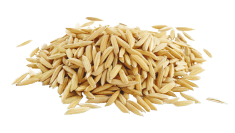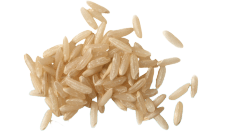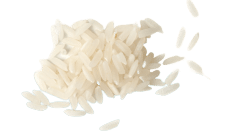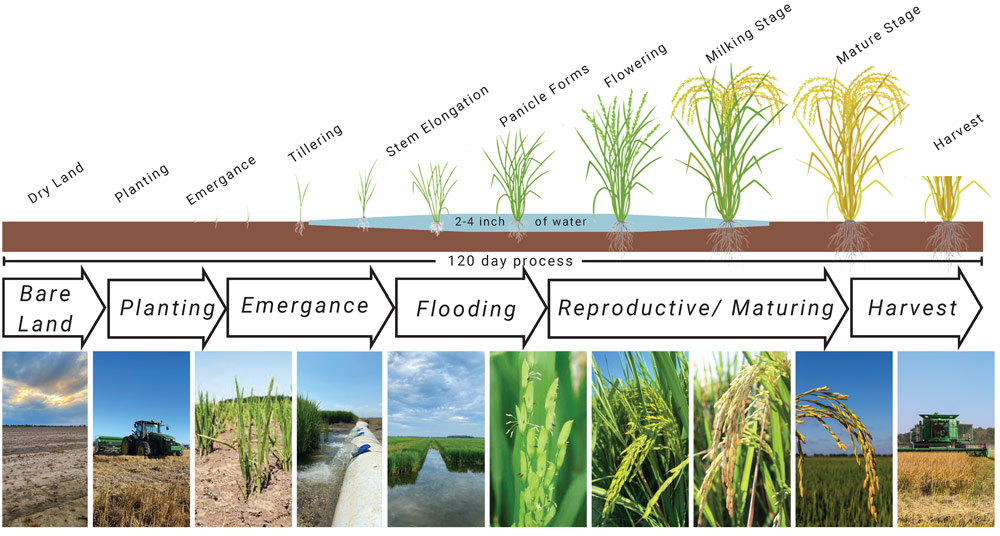
Rice Facts
- 200 million bushels of rice are harvested each year in Arkansas!
- The rice industry contributes to almost 25,000 jobs across Arkansas.
- Arkansas is number one in rice production in the United States while China is number one in the world.
- Within the past 30 years, rice farmers have reduced water use by 52%, greenhouse gas emissions by 40%, and the amount of land needed to grow rice by 39%.
![]()
The Great Wall of China is held together with sticky rice! The Great Wall was built in the 15th and 16th centuries where builders used porridge made with rice and calcium carbonates as a mortar to hold the stones together.
![]()
White rice is good for years! Uncooked white rice will stay edible and fresh for 10 to 30 years, while the shelf life of uncooked brown rice is around 3 to 6 months because the natural bran coating will oxidize.
![]()
Rice is grown on every continent except Antarctica. - Rice is easy to grow, adaptable, and has a high yield, making it a great crop to grow and feed a large population. One seed of rice planted will yield around 3,000 grains of edible rice.
Rice Life Cycle
Is rice good for you?
![]()
Rice provides complex carbohydrates to fuel your brain and body.
![]()
Whole-grain rice, like brown rice, helps reduce the risk of high blood pressure, heart disease, diabetes, and certain cancers!
What is the history of rice in Arkansas?
From the beginning... In 1904, William Fuller became one of the first farmers to grow rice successfully in Carlisle, Arkansas. By 1910, rice production, research, and milling were established across the state.
Arkansas ranks first among rice-producing states, accounting for more than 40% of U.S. rice production -- primarily long and medium grain varieties. Rice production is concentrated in the state's eastern half, stretching from Louisiana to the Missouri borders. Arkansas rice is known for its versatility and can be used in a wide variety of cuisines. It is enjoyed in the U.S. and throughout the world.
In the 1800s, growers in the Arkansas Delta needed a dependable, profitable crop, and rice became a contender almost by accident when W. H. Fuller ventured south to Louisiana in August of 1896 on a hunting trip. He first saw rice growing there, ultimately leading to the state's development of a leading agricultural industry. Fuller, along with his brother-in-law John Morris and John’s wife Emma, are generally credited with founding the Arkansas rice industry. By 1910, rice production, research, and milling were established in the state.
Today, rice is grown in 40 counties across Arkansas, primarily in the state's eastern region but also in the Ouachita and Red River Valleys in the west and southwest regions. In 2021, Arkansas rice producers harvested over one million acres and hit a record state average yield of 169.6 bushels/acre; W. H. Fuller harvested an average of 74.6 bushels/acre in 1904. With that increase in rice production, sustainability is certainly not lost on producers.
Arkansas rice farmers are committed to protecting and preserving the natural state by producing more rice while using less land, energy, and water than they did 20 years ago. Working rice fields also provide critical wildlife habitats for many species of birds, mammals, and reptiles. It is no coincidence that Stuttgart, Arkansas has the reputation of being named the rice capital of Arkansas as well as the duck capital of the world; rice fields and wildlife have a long-standing relationship that farmers fight to maintain.
With 96% of farms being family owned and operated across the state, consuming Arkansas-grown rice is supporting our neighbors who continually produce quality food and supplies.
Sizes of Rice
- Short Grain
- Grain size: Short and slightly round
- Texture: Starchy, soft, and sticky
- Common Uses: Sushi, rice balls, and rice pudding
- Medium Grain
- Grain size: Stubby grain that is two times longer than it is wide
- Texture: clings together, moist and tender
- Common Uses: Risotto, paella, and various side dishes
- Long Grain
- Grain size: Long and slender; around three to four times longer than it is wide
- Texture: Firm, relatively dry, and fluffy
- Common Uses: Salad, stir fry, and soups
Types of Rice

Rough Rice

Brown Rice

White Rice
Rough Rice
- Completely unprocessed rice grain that includes the hard fibrous hull. The hull is a natural protective barrier for the grain.
- Cooking: Rough rice is not edible.
- Common Uses: Used in pet food or further processed to brown and white rice.
Brown Rice
- A rice kernel with the outer hull removed, but the bran and germ layer remain. This type of rice is also called whole grain rice.
- Cooking: Brown rice takes longer than white rice to cook. Once cooked, it has a nutty and chewy texture.
- Common Uses: Slightly healthier option to add to any protein and veggie dish.
White Rice
- The very center of the kernel that has had the outer hull, bran layer and germ removed. This grain has been polished to get that clear white color.
- Cooking: A ratio of 2-parts water to 1-part white rice will give you a fluffy, versatile addition to any meal.
- Common Uses: Pairs well with most if not all meats and veggies.
